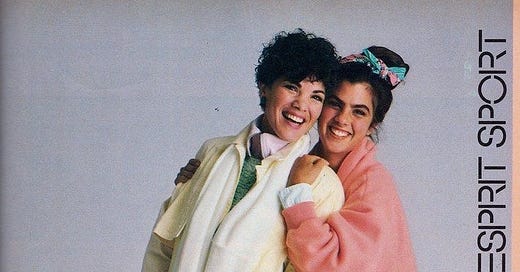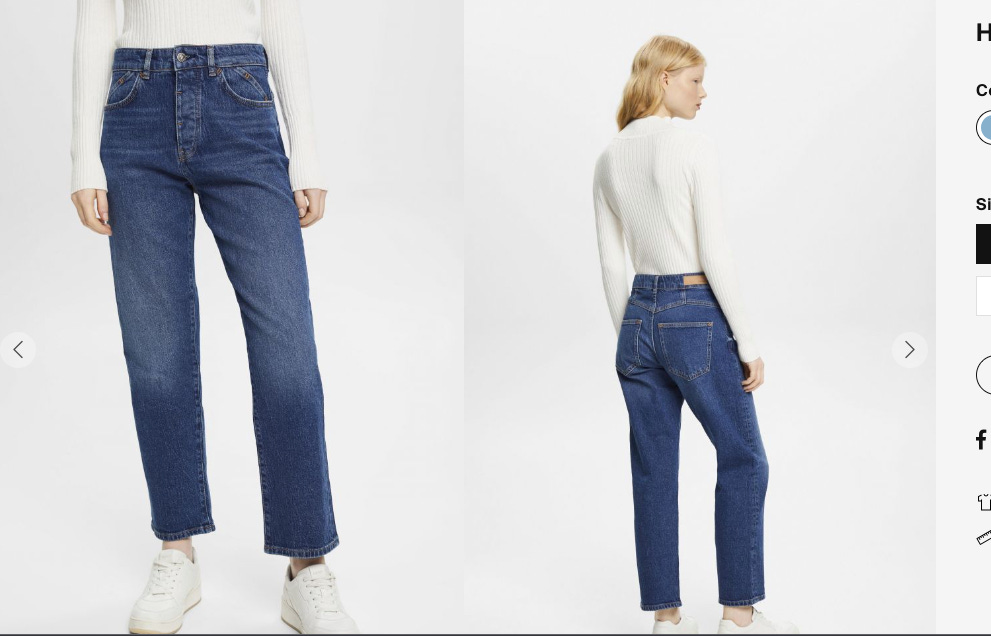Esprit de corpse: Can Fashion Resist Algorithmic Take-over?
We ponder if you can go back, and if you want to.
Esprit, the popular 80s brand, is the latest to jump on the 80-90s ‘mall vintage’ revival bandwagon. Despite the fact that the Gen Z, fashion conscious students in my Fashion and Digital Media class had never heard of Esprit, global fashion executives are pouring money into bringing the brand back by trying to mix the magical proportions of market research, influencer attention, and NYC consultant teams. The clothing itself is meh to mid, at best. What made Esprit so cool in the 80s was its arty nonchalance (you can read about how 80s Esprit paved the way for so many contemporary designers here). Obviously, fashion moved at a slower pace as well back then, which meant, among other things, that every potential market was not analyzed to death by algorithms and data points. And, we’d argue one of the main drivers behind nostalgia for the 80s-90s mall brands (and even Y2K) is the freedom from the constant surveillance of social media. (Even if the mall was the proto internet. Read our piece on the history and social importance of the mall here).
The beauty of 80s Esprit clothes came from the revolutionary branding, whacky color combos, and oversized proportions. All of these elements looked great in magazine ads, the fashion medium of the day. None of this stands out today in a world of TikToks. From the current Esprit ads and website, I get no sense of any style or perspective, and it often feels, as the kids say, “cringe”. In the 80s, diverse models were a big deal but today it’s unremarkable. As it should be.
Looking at the website is equally confusing. There is no direction, no play. All the clothing is as safe as you can get. A few recent offerings:
From this interview, the CEO of Esprit tells us: “...part of its digital strategy to “reinvent customer engagement experiences by turning data into insights”. Besides this statement being a meaningless word salad, it is laughable because fashion defies the “data into insights” equation. Fashion stays exciting because in its search for the new, it often runs against and away from what the ‘data’ says. Just ask these teens in Brooklyn. As John Fiske detailed for us, everyday people use commodities, or “what’s available,” to create new meanings and new trends. Once corporations glom onto what the fringes are doing, the trend loses its defiant meaning. The subcultures that sparked the copied trend find new ways to counter the status quo. If anything can save us from the overhyped algorithmic ‘data as insight,’ it will be fashion.
For example, the following Esprit “high rise dad jeans” reads like an AI generated fashion Madlib, and the jeans themselves offer nothing unique.
Below are some Esprit ads from 1986, featuring their employees modeling the clothing. The models, the layers, the colors—all revolutionary for the time. The new stuff lacks the vision of the original. Here is an archival Esprit Instagram account that is amazing.







Came here from the Whoorl sock chat, saw Esprit post, immediately subscribed 🩷